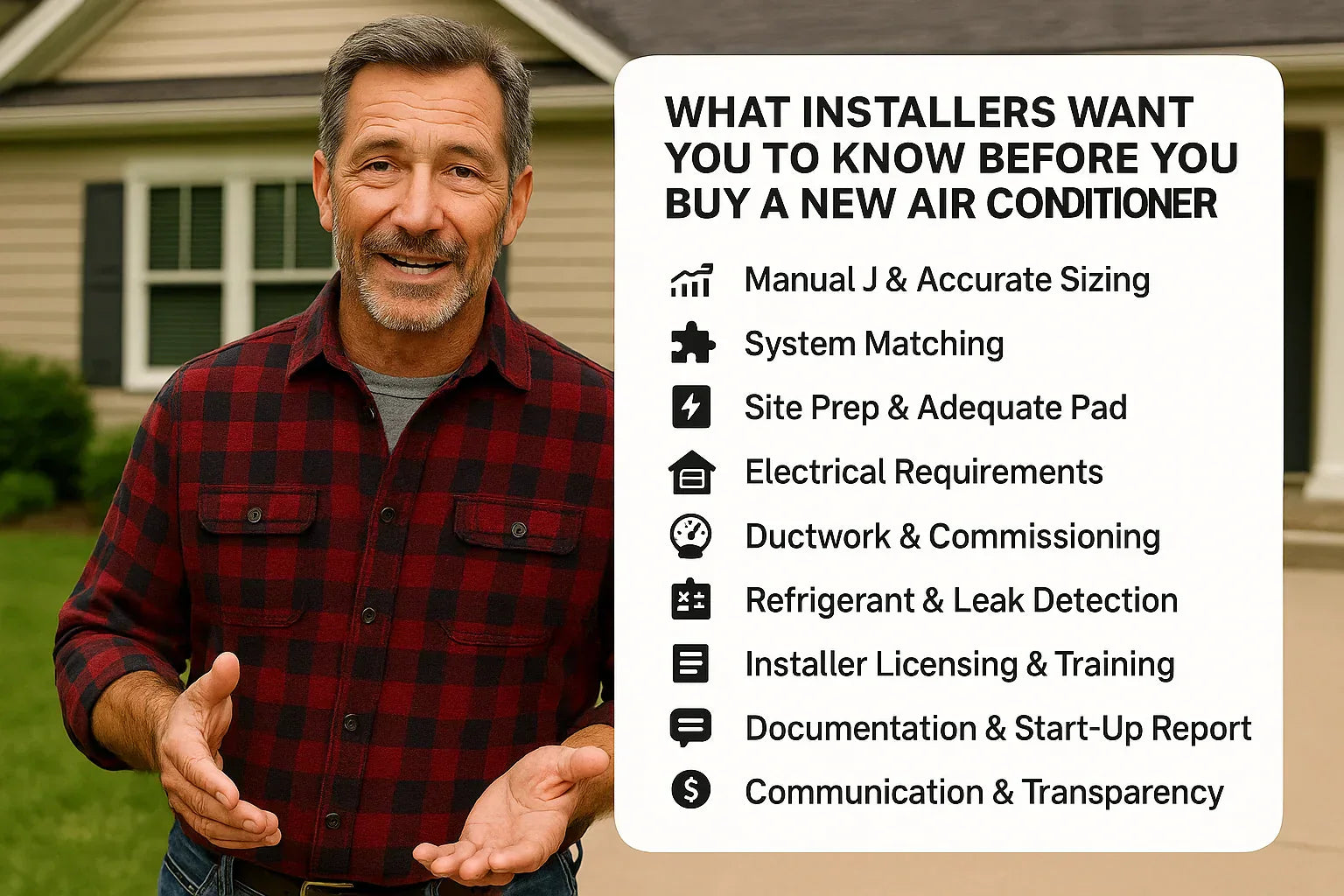1. ⚠️ Introduction: Aligning Expectations
Sometimes homeowners expect a new AC to be “plug and play.” Truth is, there’s a lot an installer cares about that you might not—and ignoring it can cost you money and comfort. Let’s talk about what matters from their side and how it benefits you.
2. 🔍 1. Manual J & Accurate Sizing
-
Installers want a proper Manual J load calculation—it ensures your system isn’t oversized or undersized .
-
A good Manual J saves you from comfort issues and rework; it also helps meet permit and rebate requirements .
3. 🧩 2. System Matching
-
Brand mismatch (coil not matched to condenser) equals poor performance and possible warranty voiding .
-
Your installer must ensure you’re pairing the Goodman condenser with the right coil and blower to hit SEER2 performance.
4. 📋 3. Site Prep & Adequate Pad
-
A unit’s pad must be level, elevated 12+ inches, and free of obstructions .
-
Poor pad prep leads to noise, drainage issues, and premature failure.
5. ⚡ 4. Electrical Requirements
-
Installers stress that you need a dedicated breaker, correct wire gauge, and proper grounding for safety and code .
-
Incomplete wiring leads to potential hazards and install delays.
6. 🌀 5. Ductwork & Commissioning
-
Technicians want sealed ducts and verified airflow (350–450 CFM per ton) .
-
They may recommend coil cleaning or sealing work before install to maximize efficiency.
7. 🌡️ 6. Refrigerant & Leak Detection
-
Proper refrigerant charge is critical — installers must vacuum lines, pressurize, and adjust superheat/subcooling .
-
Early leak detection prevents performance issues and repeated callbacks.
8. 🧰 7. Installer Licensing & Training
-
Make sure your tech holds an active HVAC license and is trained in SEER2 testing, R-32 refrigerant handling, and manufacturer procedures .
-
Untrained techs may mischarge or fail to meet code.
9. 📄 8. Documentation & Start-up Report
-
A good installer will provide a start-up sheet with measured pressures, airflow, amps—these aren’t optional .
-
Save that report for warranty and future troubleshooting.
10. 💡 9. Communication & Transparency
-
Installers appreciate homeowners who ask “What’s the process? When are permits pulled? What’s the timeline?”
-
Clear communication prevents misunderstandings and unscheduled delays.
11. 💰 10. Budget for the Unexpected
-
Installers put aside a buffer for costs like electrical panel changes, permit delays, or coil issues.
-
Smart homeowners align on a clear estimate with contingency before work starts.
12. 🧠 Mike’s Homeowner Checklist
-
Manual J completed
-
Matched coil/handler specified
-
Pad meets clearance & elevation
-
Dedicated breaker, grounding, wiring in place
-
Airflow verification planned
-
R-32/SER2 training confirmed
-
Start-up data sheet provided
-
Communication and written estimate set
13. 🔗 Verified Sources & Deep Dive Reading
14. 🎯 Final Takeaway
Installers want two things: precision and transparency. Check the boxes above, hire well-trained pros, and you’ll end up with the best performance and longevity from your Goodman 2‑ton system—without drama or surprise costs.
In the next article we will know about: Federal Tax Credits, Utility Rebates & Incentives for SEER2 Air Conditioners in 2025, By Mike Sanders – The HVAC Guy Next Door







